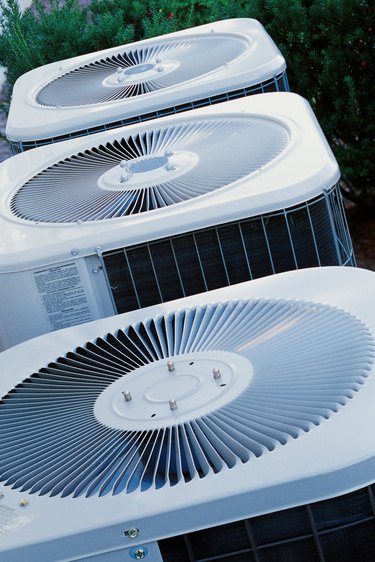Things You'll Need
Vacuum pump
AC conversion kit
Isopropyl alcohol

R12 was once used in many air conditioning units as a refrigerant or cooling agent. However, it was found to be a very bad gas for the environment. But R22 is almost equally damaging. Rules governing changing from the former to the latter differ between countries. R12 and R22 are both now banned by the EPA in the United States. Other more environmentally friendly alternatives exist, but even those cannot be changed in air conditioners or other refrigeration units with R12 without a thorough cleaning of the unit.
Preparation
Step 1
Get a vacuum pump. A strong pump can be economical, since the cost of a professional service will exceed the cost of the tools. Also, if your conversion fails to work perfectly, you can always do it again.
Video of the Day
Step 2
Buy a conversion kit. Some are made for GM brands, while others are universal and apply to all vehicles.
Step 3
Replace the filter/drier. Make sure your conversion kit includes one that is R22 compatible.
Step 4
Remove the existing expansion valve.
Installation
Video of the Day
Step 1
Remove the existing drier, disconnecting the lines at the compressor.
Step 2
Pour isopropyl alcohol into the lines ones at a time. Blow air through the lines afterwards using the blowgun. This pushes the contents out of the line at the compressor end. Use a bucket to catch the contents.
Step 3
Install the new drier and expansion after flushing both the condenser and evaporator sides of the air conditioner.
Step 4
Investigate for leaks using a UV light, checking the entire system including the condenser for any traces of UV dye. Clean any stains with isopropyl alcohol.
Step 5
Hook up the manifold set, and attach the a vacuum to the system. Once a vacuum is established in the manifold for 15 minutes, shut the gauges, close the ball valve and turn off the pump. Let everything sit for 15 minutes. Open the manifold valve and check if the vacuum has held. Close the manifold gauge and let it sit another 45 minutes, and repeat the 15 minute wait. If the vacuum is maintained on both occasions, it's a good assurance there are no leaks.
Step 6
Inject the oil in the injector tool, and inject one can of R22 into the system, Disconnect the injector, reconnect the hose and put in two additional cans of R22. If more than three cans are required, insert the remainder that is necessary.
Tip
According to the EPA, "After 2020, the servicing of R-22-based systems will rely solely on recycled or reclaimed refrigerants. It is expected that reclamation and recycling will ensure that existing supplies of R-22 will last longer and be available to service a greater number of systems. As noted above, chemical manufacturers will no longer be able to produce, and companies will no longer be able to import, R-22 for use in new A/C equipment after 2010, but they can continue production and import of R-22 until 2020 for use in servicing existing equipment." A compressor doesn't have an internal oil system. It uses the oil suspended in the refrigerant for lubrication.
Warning
If the vacuum doesn’t hold, there is a leak somewhere. It's recommended to put in one can of refrigerant and jump the pressure switch so the compressor runs and cycles the oil through the system, then check for leaks with the UV light. This is the reason for checking and cleaning the lines before hand, so that you don't have any false indications. If you have to fix a leak you don't need to flush the system again after opening it, but you should put back a little oil -- depending on how much got expelled -- other than repeating the procedure again.